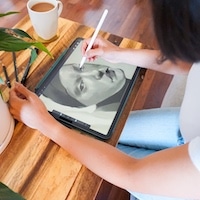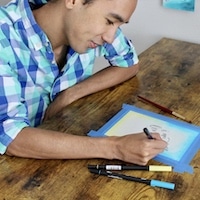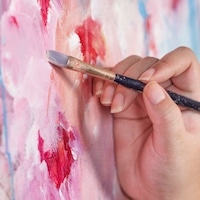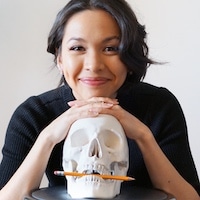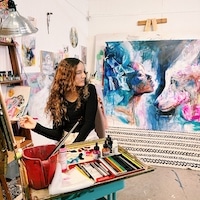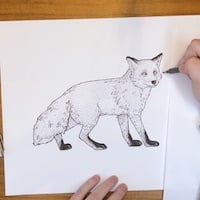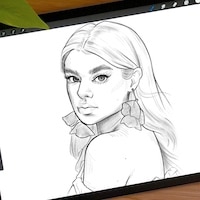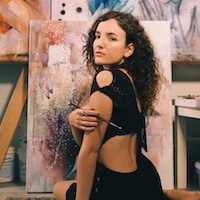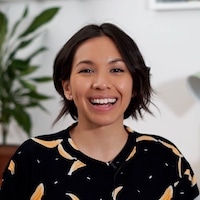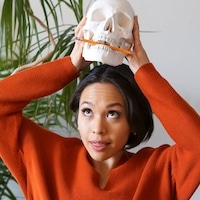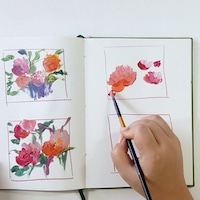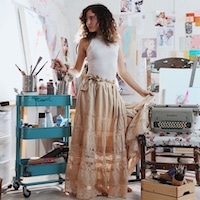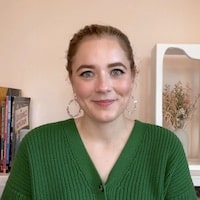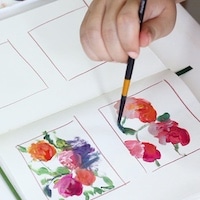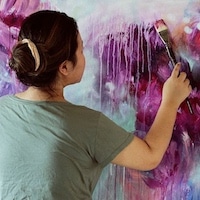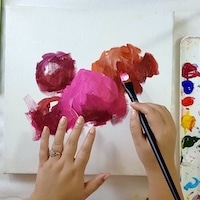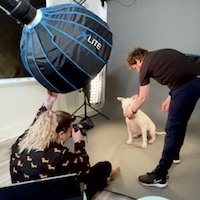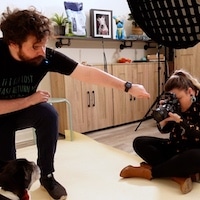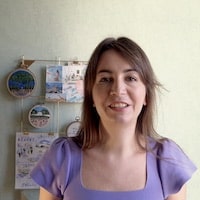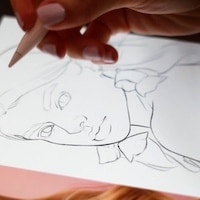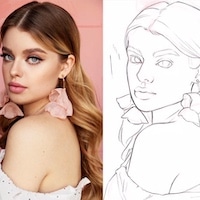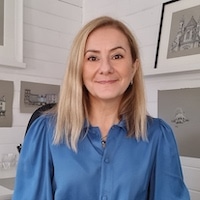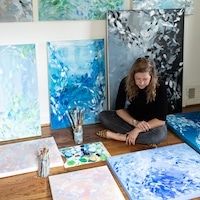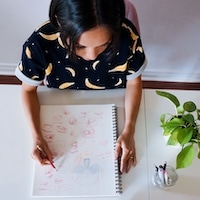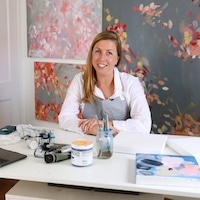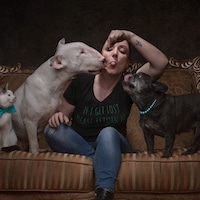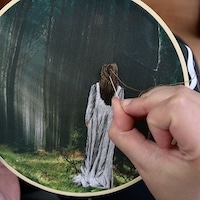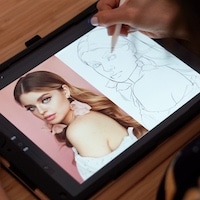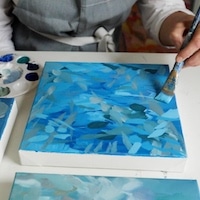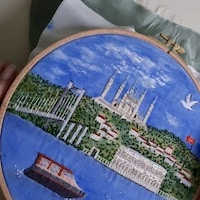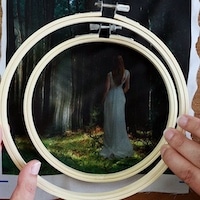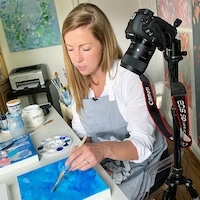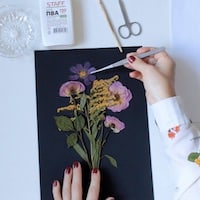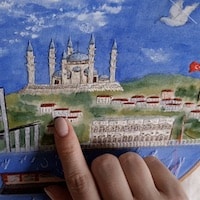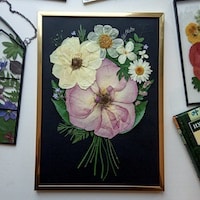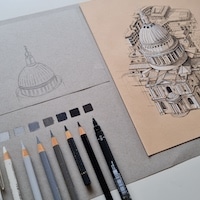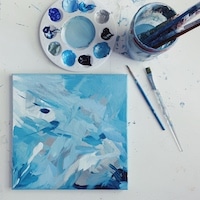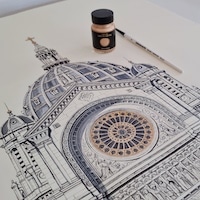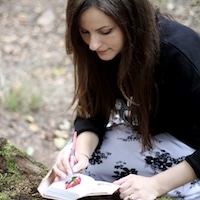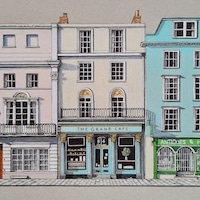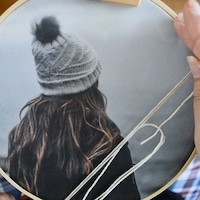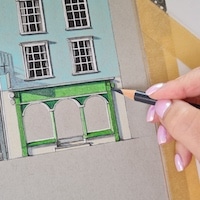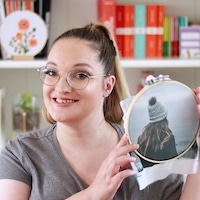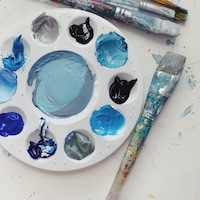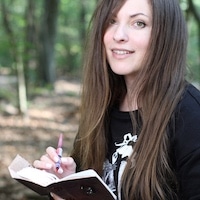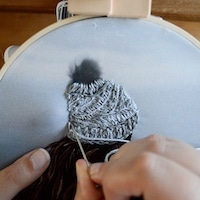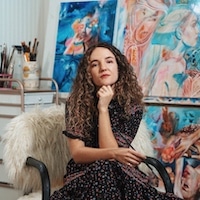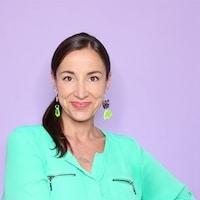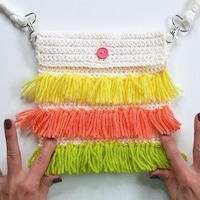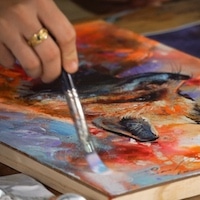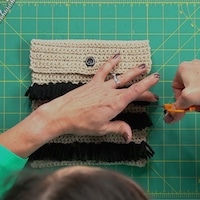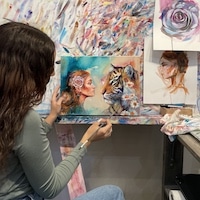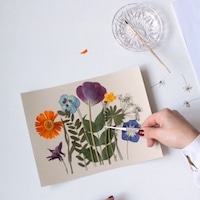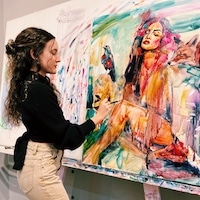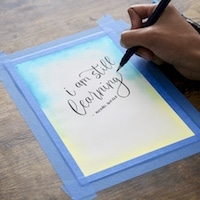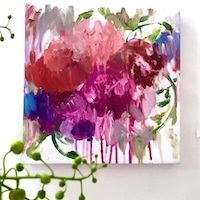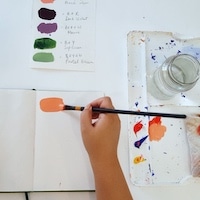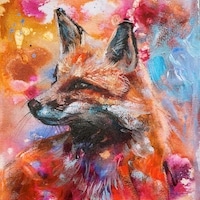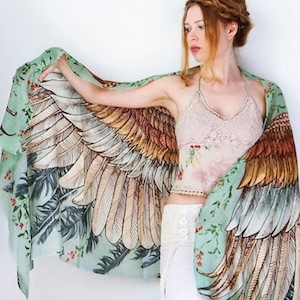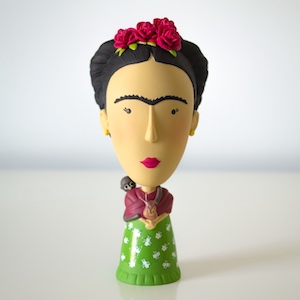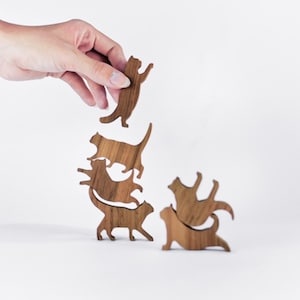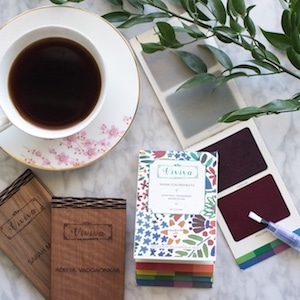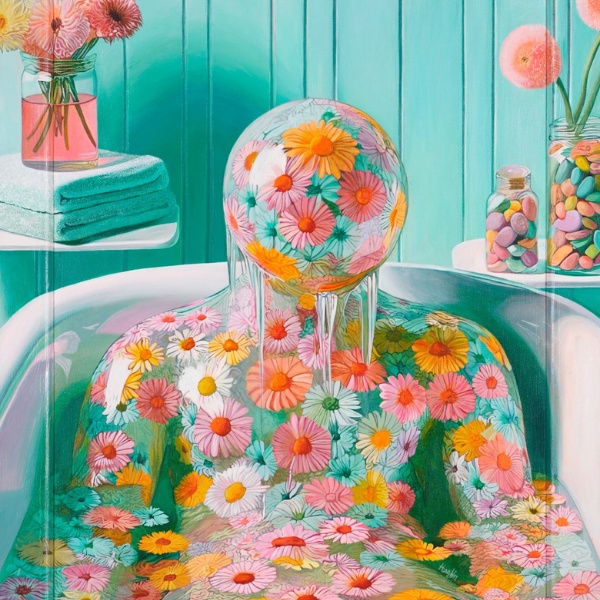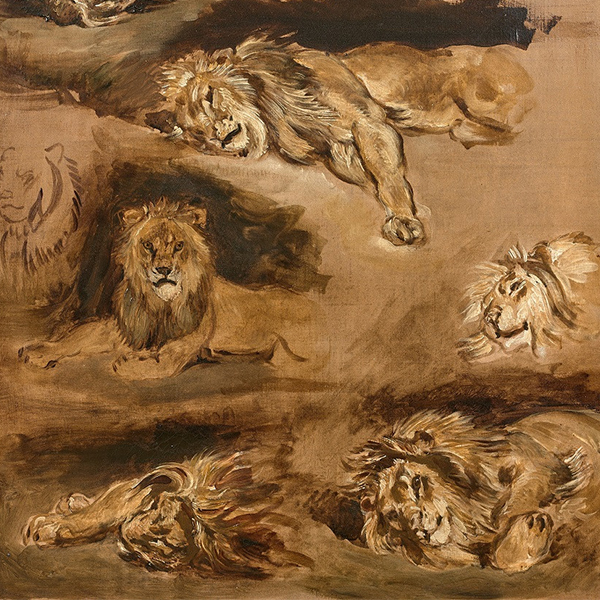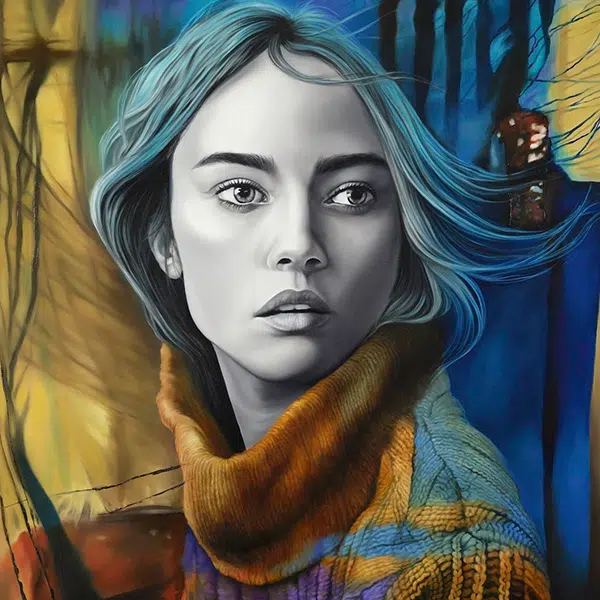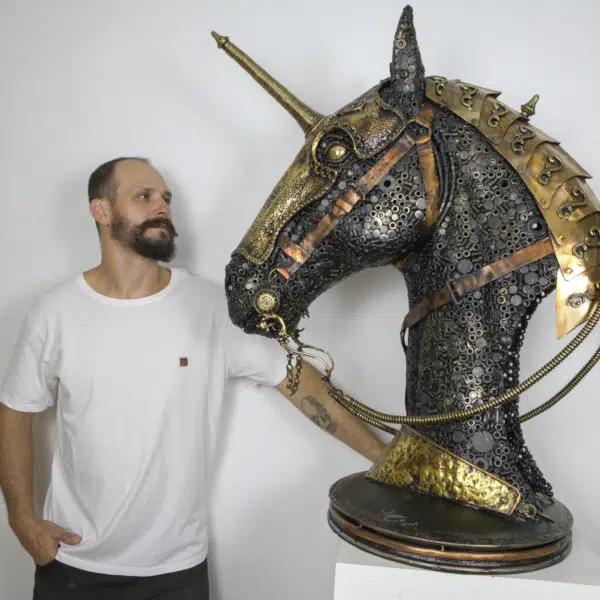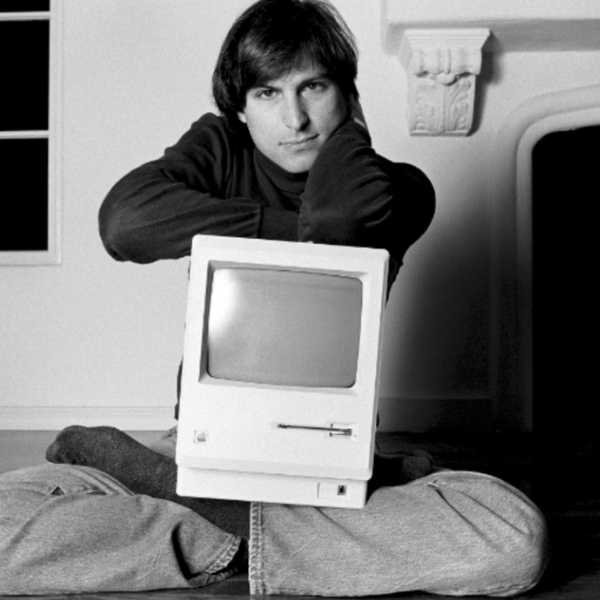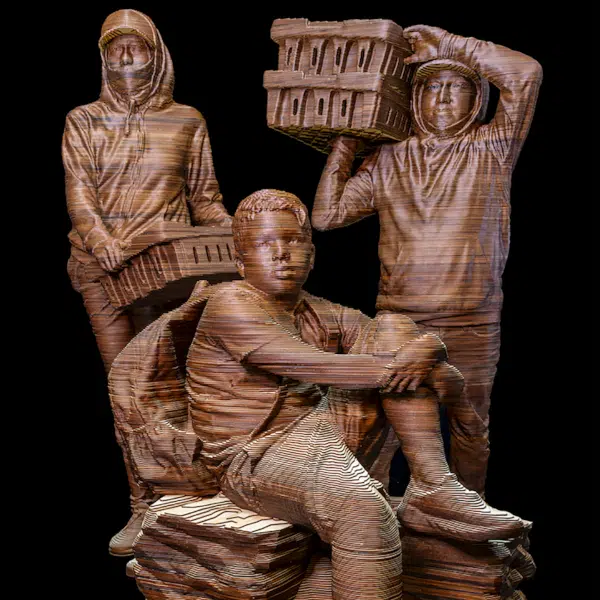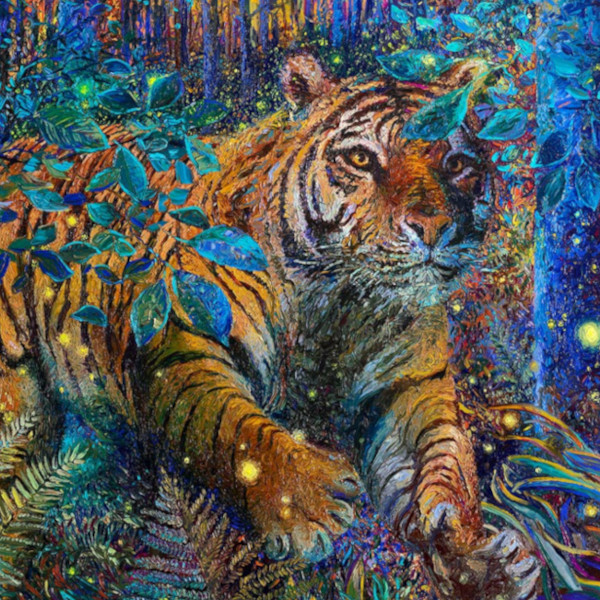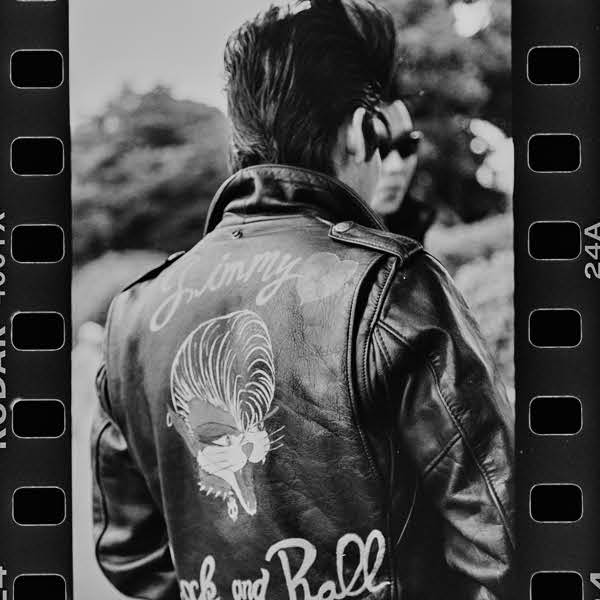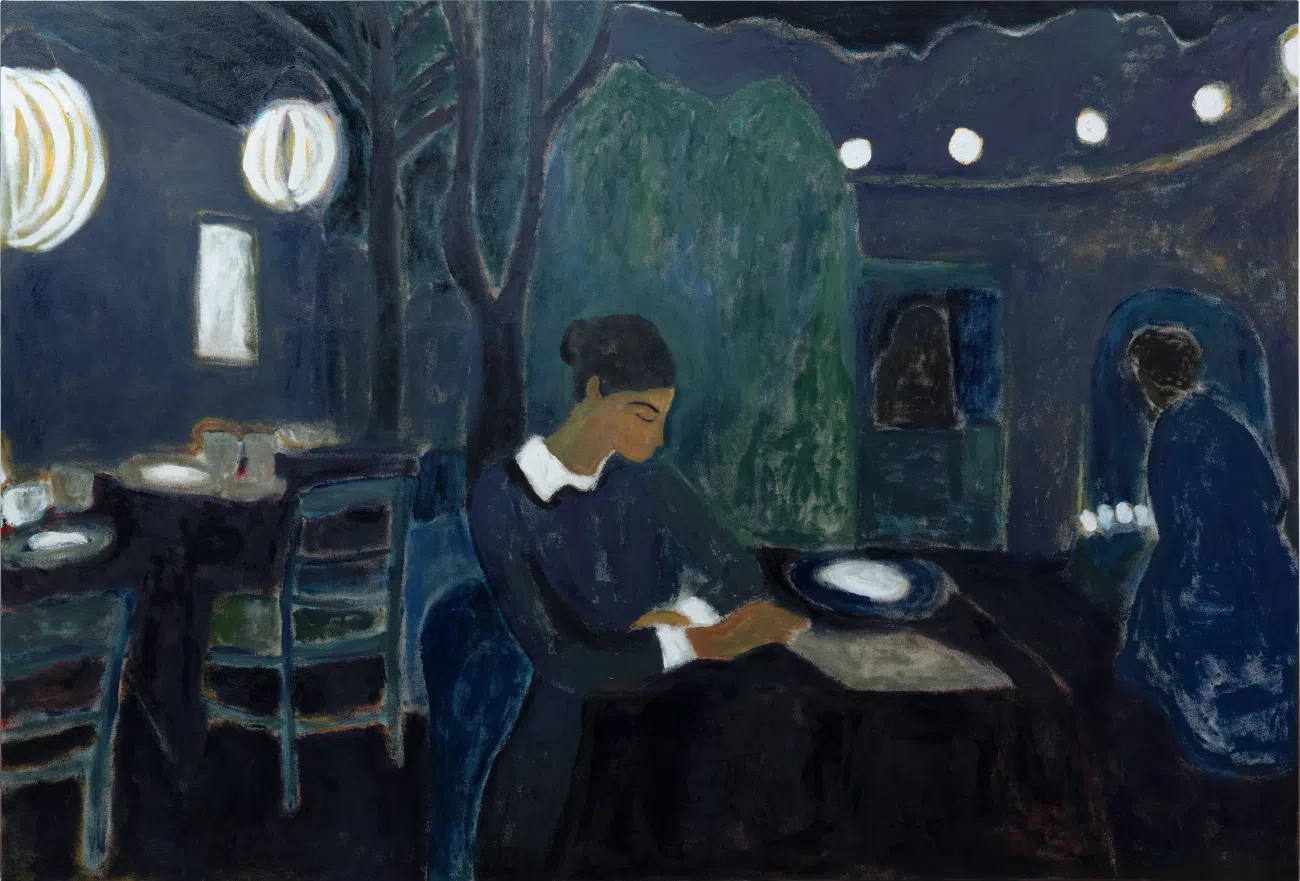
“Serene” (2024). Courtesy of the artist and Mariane Ibrahim
Haitian-American artist Patrick Eugène‘s oil paintings straddle the line between abstract and figurative art. They sit in an area that almost appears Post-Impressionistic on the verge of Cubism; yet, at the same time, they are decidedly contemporary. His paintings are all the more impressive when looking at his creative process, which forgoes a traditional sitter or reference image, allowing him to paint freely and spontaneously.
Now based in Atlanta, we ran into Eugène's oil paintings at Frieze Los Angeles, where he was being shown by the well-regarded Mariane Ibrahim Gallery. His rise in the art scene is especially remarkable when realizing that Eugène isn't only self-taught, but that he only started painting about 13 years ago. Drawing on his Haitian heritage and immersing himself in his creativity, he's carved out a place for his evocative paintings.
Undoubtedly, Eugène's art draws the viewer in. The figures in his work appear immersed in thought, leading us to fill in the blanks. Placed in fairly minimalist settings, the paintings allow viewers to draw their own conclusions, even placing themselves in the scene.
We were fortunate enough to have the opportunity to speak to Eugène about his striking paintings, his creative process, and how his heritage informs his work. Read on for My Modern Met's exclusive interview.
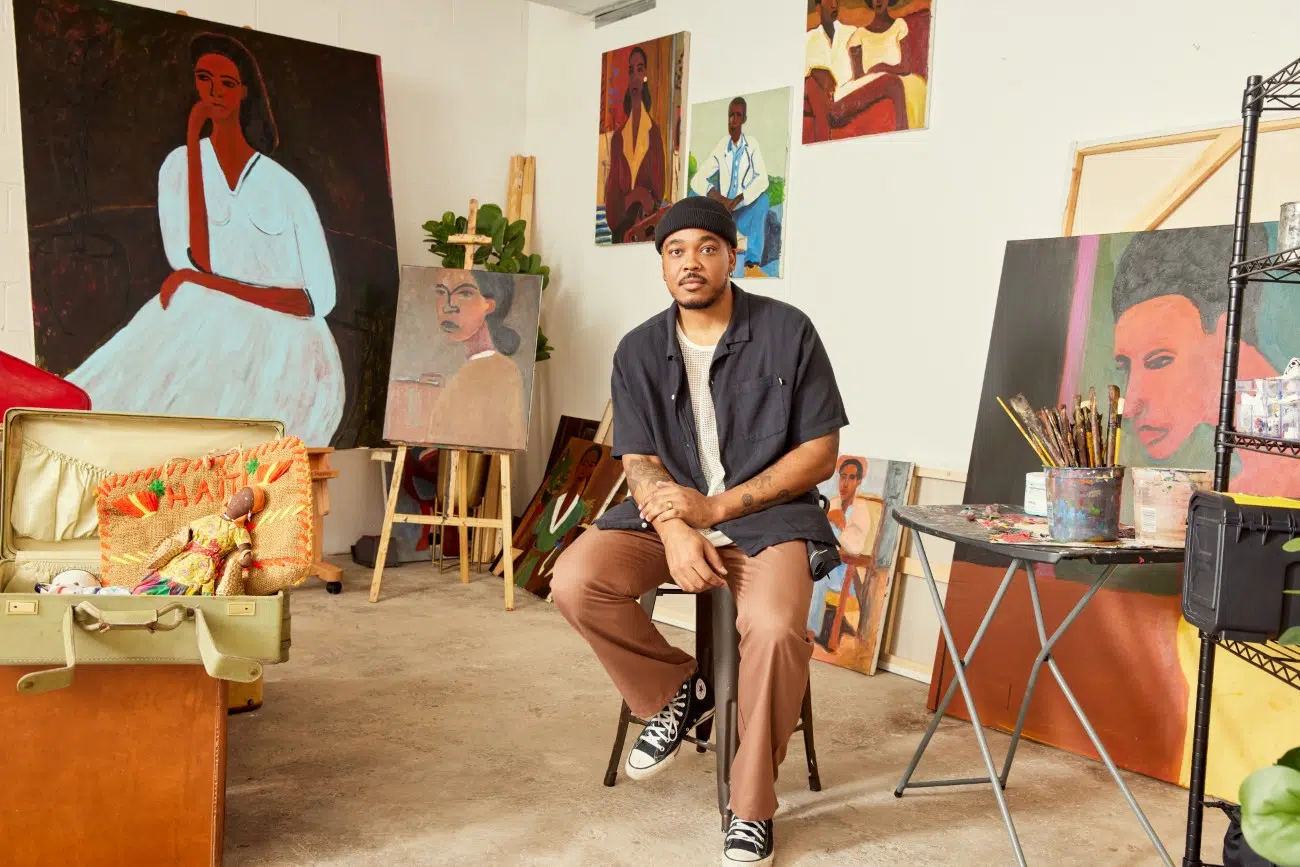
Photo: Sydney Foster. Courtesy of the artist and Mariane Ibrahim
How did your love of art begin?
I’ve always been drawn to creativity in all its forms, especially music. Growing up, I was involved in production companies, writing and producing music for artists. It was something I always did alongside my nine-to-five jobs or schooling, more of a passion than a profession at the time.
I also grew up in a home filled with art. My mother collected a lot of traditional Haitian works, so I was constantly surrounded by it, though I didn’t think much of it as a kid. It was just part of my environment. But when I turned 27, I felt the need to explore another creative avenue. That’s when I started drawing, which eventually led to painting. That’s how it all began.
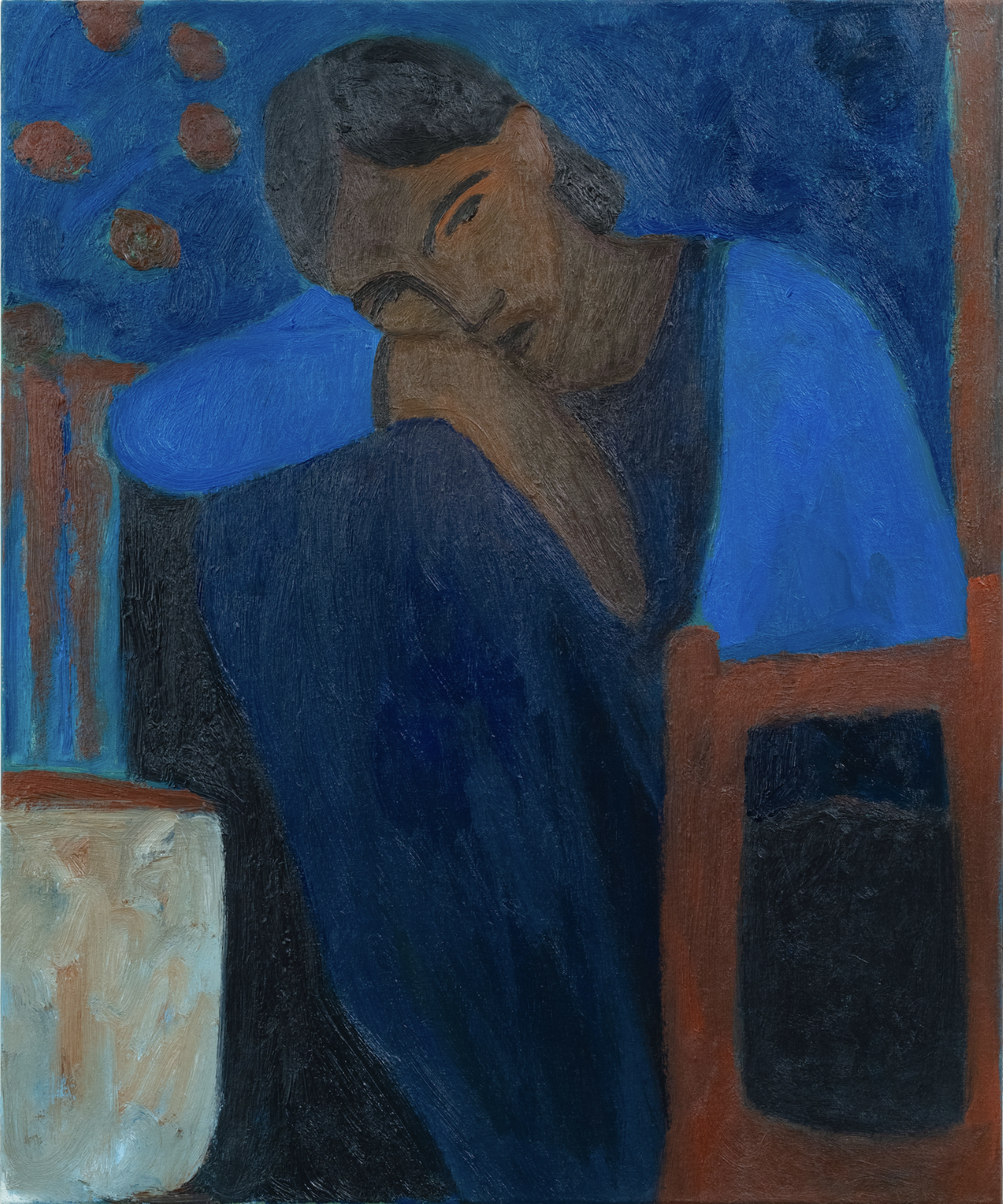
“Soft Places to Land” (2024). Courtesy of the artist and Mariane Ibrahim
What pushed you toward figurative art after initially working in the abstract?
Actually, I started with figurative work while teaching myself how to paint. Like most artists, I began with what was most familiar, studying the human face, understanding symmetry, and learning how to capture a likeness. After a couple of years, as I deepened my studies and became more confident, I started loosening my approach, which eventually led me to abstraction.
Abstraction was freeing in a way that figurative work wasn’t at the time. It allowed the viewer to feel rather than be told what to see. I loved that openness. But I also knew that if I could bring that same emotional depth to figurative work, if I could make people feel something beyond just recognizing a face, then I would return to it. Now, in my newer works, I’m incorporating elements of abstraction that I learned over the years, blending them into my figurative practice.

Frieze LA 2025. Courtesy of the artist and Mariane Ibrahim
How does your Haitian heritage inform your work?
Growing up surrounded by Haitian art, I absorbed a lot of its visual language: vibrant colors, layered textures, and expressive forms. Those influences naturally made their way into my practice.
Beyond aesthetics, my heritage informs my work on a deeper level. My father is a huge music lover, so Haitian music—especially Kompa—was always playing in the house on weekends. That rhythm, that energy, is something I feel when I paint.
In 2010, after the earthquake, I began visiting Haiti regularly, and those trips broadened my perspective. Witnessing the resilience of the people, the beauty of the culture, and the layers of history gave me a stronger sense of connection. That spirit of endurance, pride, and quiet strength echoes in my work, particularly in the posture and expressions of my figures.
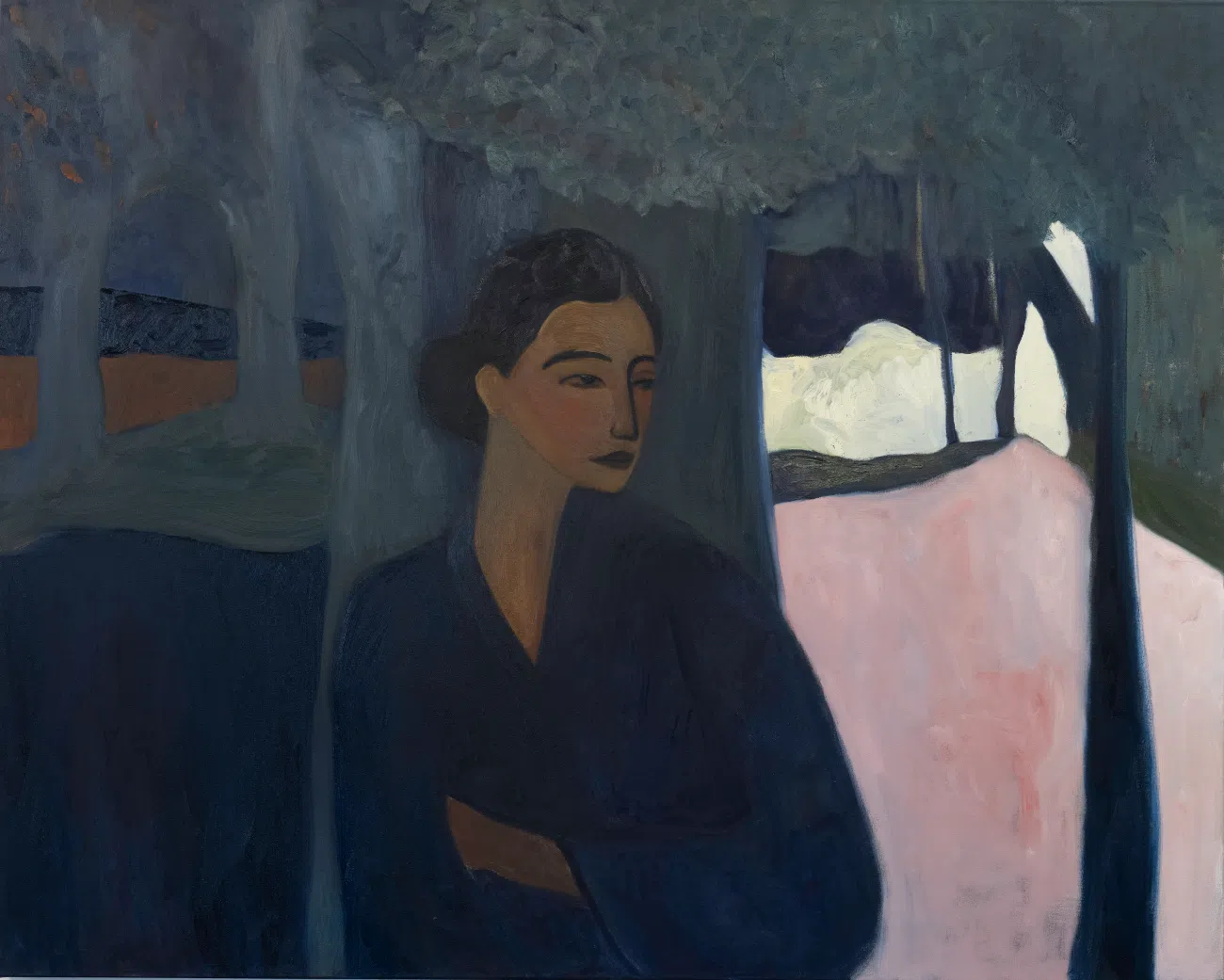
“The Hours Left Behind” (2024). Courtesy of the artist and Mariane Ibrahim
What led you to place your figures in minimalist settings?
It goes back to the idea of abstraction; I like to leave space for the viewer to engage with the work and create their own narrative. By stripping away unnecessary details and keeping the settings minimal, I allow the figures to exist in a place that is both specific and universal.
The ambiguity of the background invites interpretation. It can be anywhere; it can be nowhere. It allows the emotion of the piece to take center stage rather than being tied to a particular location or moment in time.
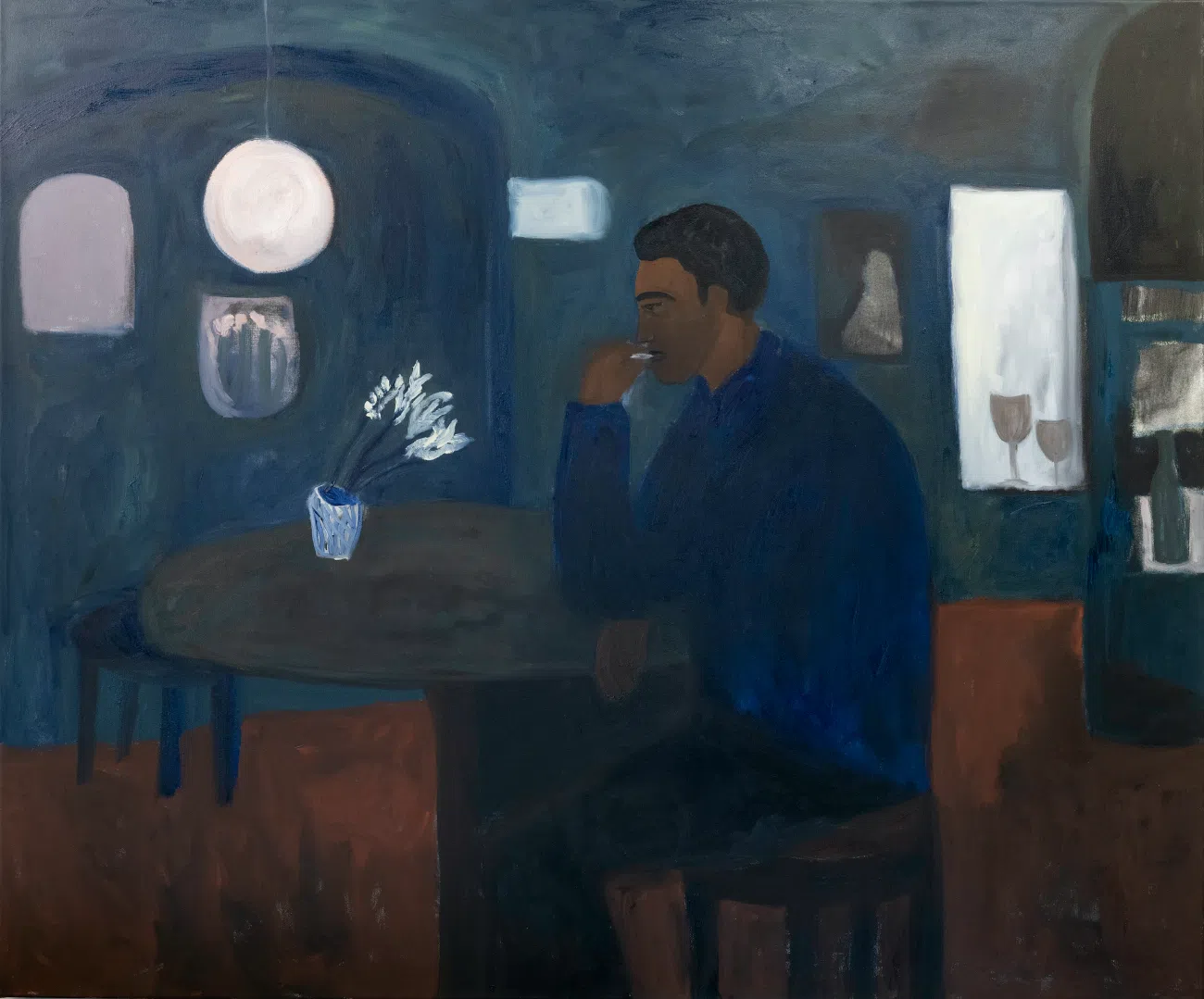
“A Thought” (2024). Courtesy of the artist and Mariane Ibrahim
Can you share a bit about your creative process?
My process is deeply meditative. I don’t use reference images or traditional sitters, not directly, at least. Instead, I let moments and impressions accumulate in my mind over time.
I work in series, starting with a general theme and then breaking it down into different moments that I want to capture. When I step into the studio, I clear my mind, play music, and just let the process unfold. I think about ancestral energy and try to tap into something beyond the physical world. My goal is to honor that presence in my work.
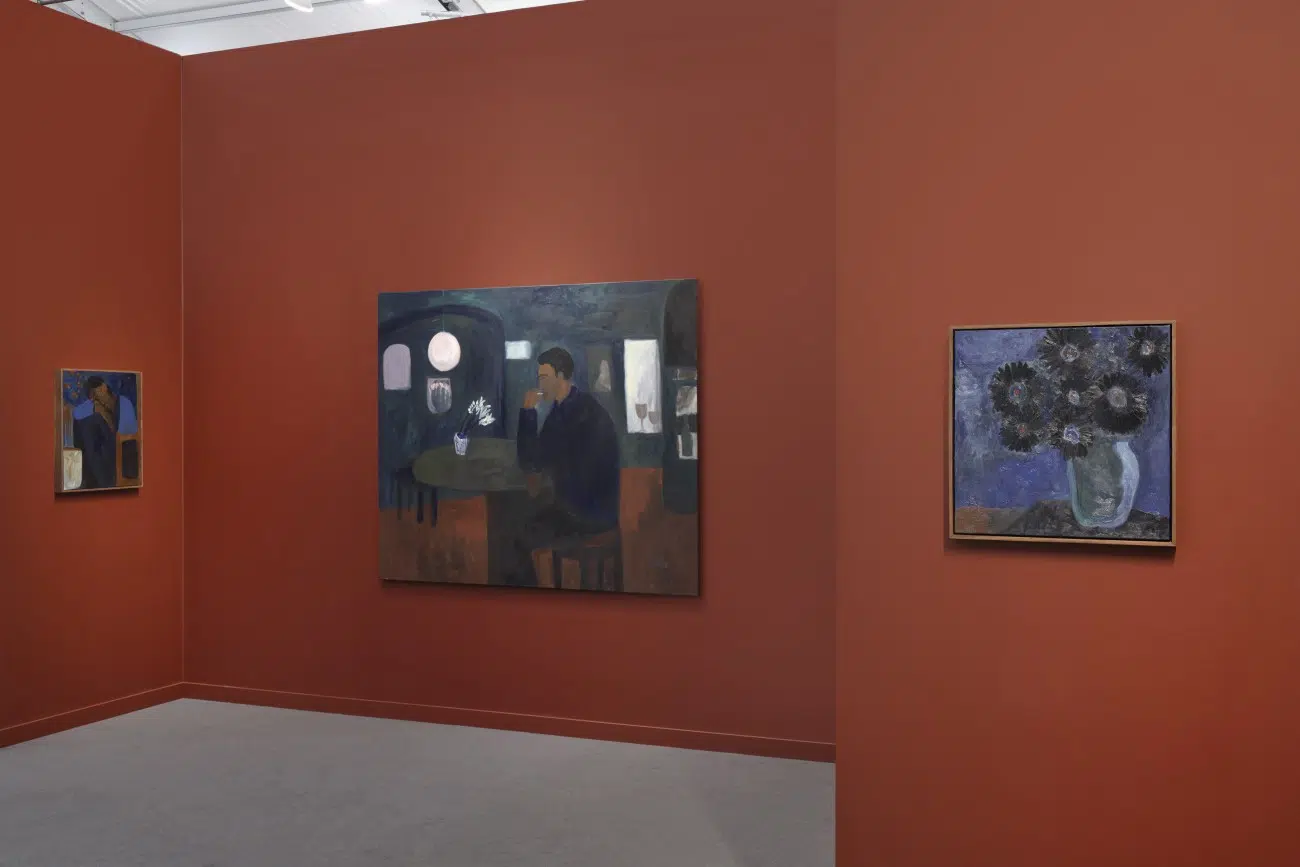
Frieze LA 2025. Courtesy of the artist and Mariane Ibrahim
Why do you choose to eschew traditional sitters or reference images?
For me, working without a reference keeps the process alive. When I’ve tried using reference photos, I’ve found that it can sometimes feel contrived; it loses that element of spontaneity that makes painting so engaging for me.
It’s definitely a challenge, but that’s part of the appeal. Without a photo to follow, I have to rely on memory, intuition, and emotion to guide the piece. I let the figures emerge naturally rather than forcing them to conform to a specific likeness. It keeps the work fresh and allows for more expressive, fluid storytelling.
That being said, I’m always open to evolving. Who knows, there may come a time when I bring references back into my process in a new way.
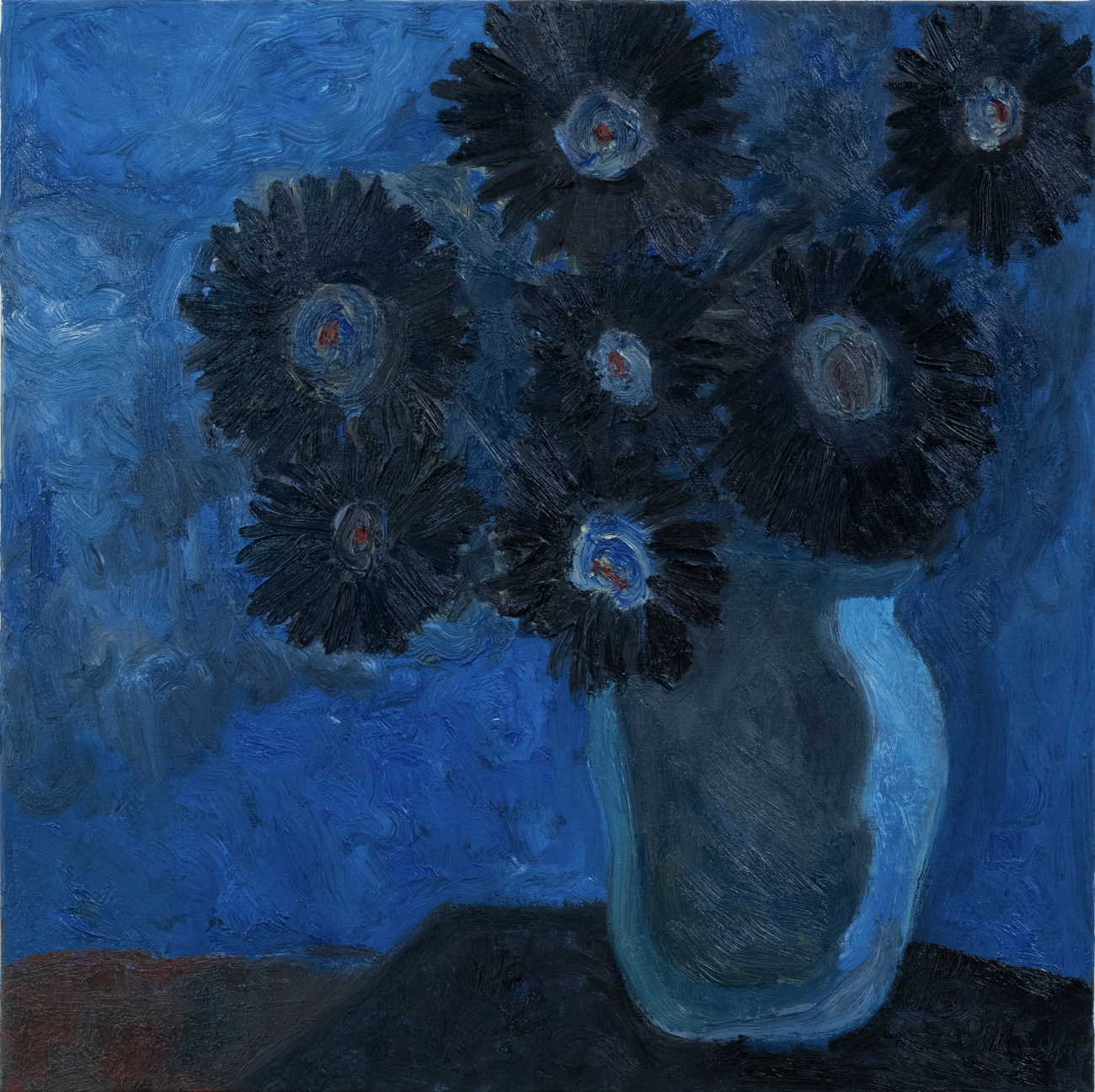
“Nightflower” (2024). Courtesy of the artist and Mariane Ibrahim
What do you hope people take away from your art?
I hope my work resonates on an emotional level, that it sparks a moment of reflection or connection. My figures are of brown skin because that’s my world, my family, and my lineage, but the themes I explore are universal.
At the core, I’m interested in capturing human emotions: solitude, resilience, introspection, joy, creativity… These are experiences we all share, regardless of background. I want my work to feel timeless, to communicate with future generations as much as it does with the present.
What’s next for you?
There’s a lot in the works: fairs, shows, new series, and some exciting collaborations I can’t speak on just yet. I’m constantly pushing my practice forward, experimenting with new ideas, and finding ways to challenge myself.
I’m excited for what’s ahead, and I’m looking forward to seeing where the journey takes me next.


